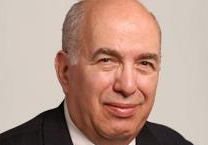How Big Money Bets for and against Rates: Part 1

Central bank monetary easing via balance sheet expansion has been a dominant theme in financial markets since the credit crisis in 2008. Although most of the attention has focused on the effects monetary easing has had on asset valuations in general (with good reason), these are far from the only notable impacts.
With developed market interest rates near record lows, institutional investors — from insurance companies to banks to money managers must manage the increased interest rate risk that accompanies lower coupon securities
The purpose of this series of blog posts is to explore the tools available to different types of investors looking to manage their interest rate risk or speculate on rate movements. These methods are not only interesting in their own regard but also shed light on the costs of such proposals and offer insight into who the winners and losers have been thus far.
For many investors, especially those with a maturity mismatch between assets and liabilities, the primary concerns are not about whether the ten year treasury bond is at 1.50% or 2.25, but whether their balance sheets could withstand a much more dramatic rise in rates. An instrument that allows for this is sometimes referred to as a “tail hedge.”
While individual investors might use ETFs/ETNs or futures to express a view in interest rates, larger institutions can utilize swaptions, a customizable option on a swap that can be structured in very large sizes.
A swaption is an option to enter into a swap at some point in the future. A 5 × 10 payer swaption, for example, is an option to enter into a 10-year swap (in which the investor pays out a fixed rate and receives a floating interest rate) beginning in 5 years. The investor pays an upfront premium, and the payout is the difference between the market rate and strike level at expiration multiplied by the dollar duration (DV01), the trade term for the first derivative of price with respect to interest rates as measured in basis points.
As rates increase, the rate of increase in the price of a swaption increases at a decreasing rate, making them more suitable instruments for small changes than for large shocks. To put more clearly, the discount rate increases as rates rise, eating into the present value (PV) of the swap. To practitioners, this is known as “negative convexity”.
An alternative to swaptions is constant maturity swap (CMS) rate caps. A CMS cap pays-off for a buyer when interest rates rise above a specified strike price, in this case being a specific reference rate such as the 10yr swap rate. CMS caps, as opposed to swaptions, pay a fixed value per rate of change; therefore they do not exhibit negative convexity.
Additionally, due to the “constant maturity” component of CMS, they offer a different type of exposure to the yield curve. In a scenario where the yield curve steepens as rates rise (known as bear steepening), an investor with specific and ongoing exposure to the long end of the yield curve would, all else equal, benefit more from out of the money (OTM) 10yr CMS caps than a traditional swaption in case of a dramatic sell off.
In most options markets there are natural buyers and sellers of various options. When it comes to OTM call options on interest rates (particularly longer tenors) there are very few, if any, natural sellers. One could think of AIG selling credit default swaps as an analogy (AIG collected a small upfront premium to insure bondholders from default). In order to entice interest rate desks of investment banks or hedge funds to sell this protection, an extra amount of compensation must be provided.
The result is that the difference between the volatility implied by options at varying levels of moneyness, known as skew, is large. Implied Volatility is much greater on OTM options than ATM options. Combined with the aforementioned high premiums, the continually low rate environment of the last couple of years means that most buyers of OTM caps are likely to have seen their options expire worthless, making being an option seller the winning trade. Even if rates rise, the large premium of these options means rate increases have to outpace the levels implied by the forward curves. CMS cap buyers may be proven correct one day but, until then, the high cost of “disaster” insurance will be a tailwind for the sellers of this skew.
If you liked this post, don’t forget to subscribe to Inside Investing via Email or RSS.



One comment on “How Big Money Bets for and against Rates: Part 1”